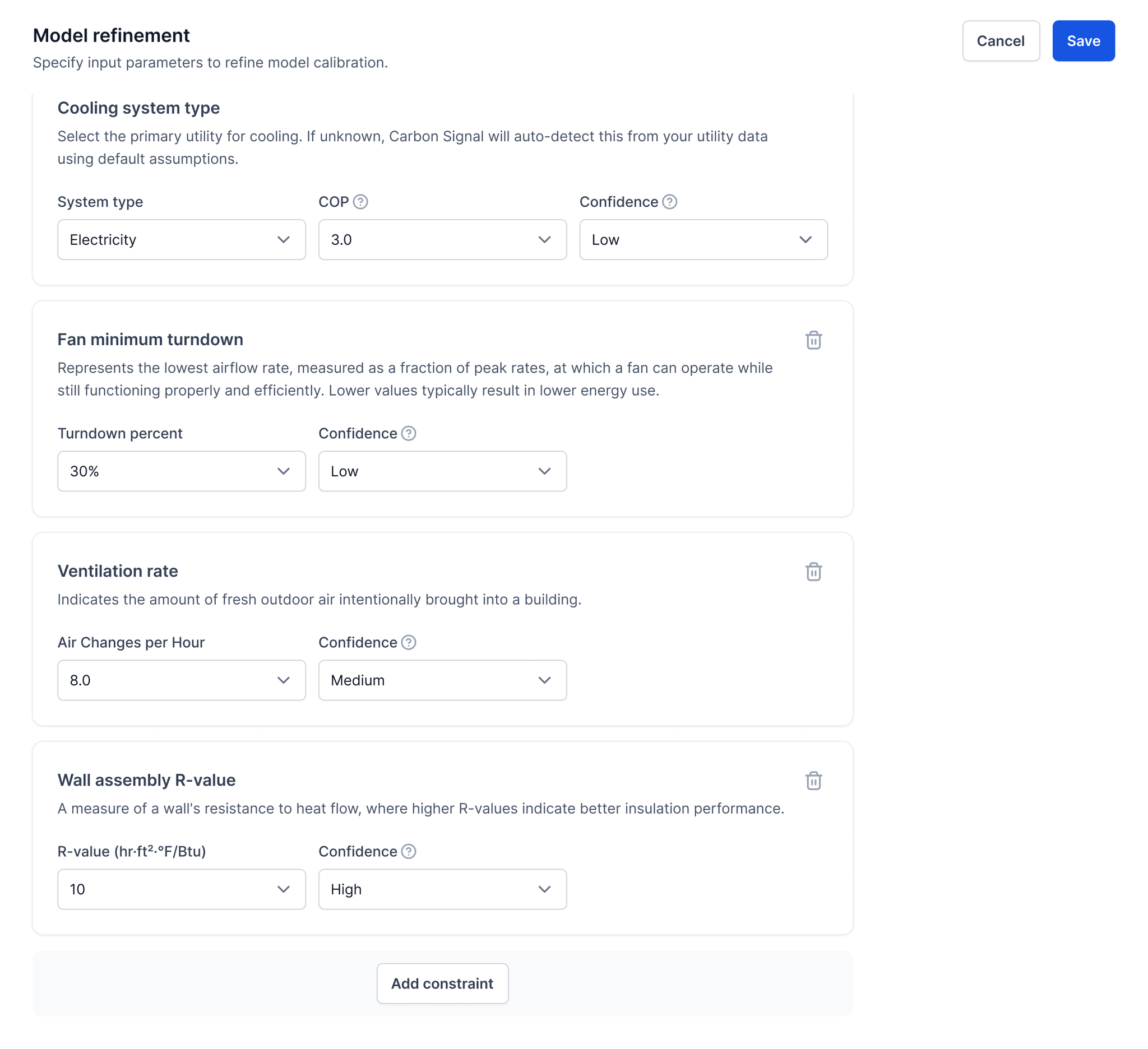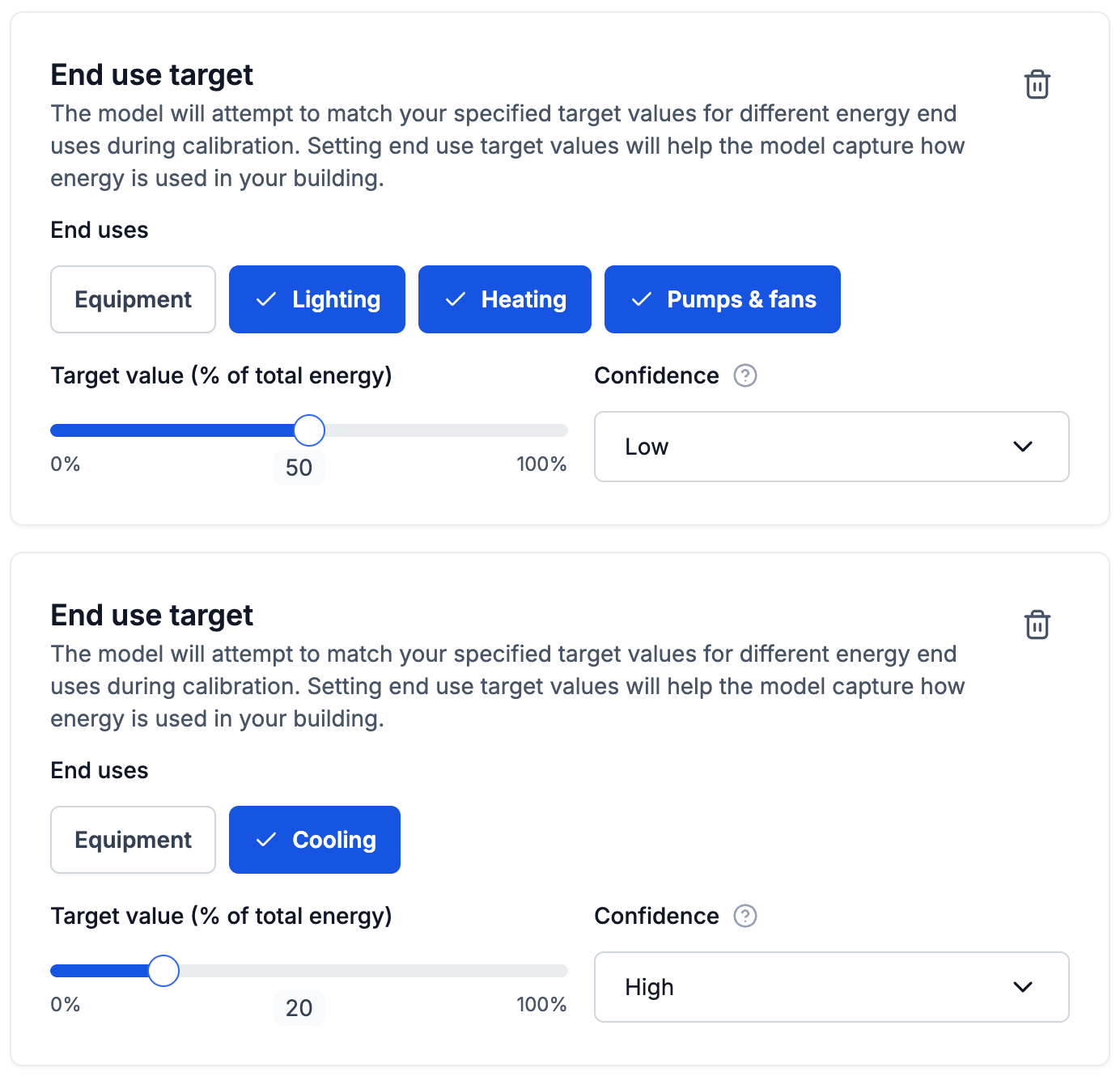Model Refinement enhances model accuracy by constraining key parameters to match verified performance characteristics. This helps create more alignment between the model and real-world performance.
To access Model Refinement, go to the Building Details page and click the Model Refinement page tab. By default, two constraints are already applied: Heating system type and Cooling system type.
To add more constraints, click the Edit button, then select Add constraint. Choose the type of constraint you’d like to add set its value, and select a confidence level—Low, Medium, or High—which determines how strongly the input influences the model results.

You can choose from a range of building characteristic constraints, including:
- Window assembly U-value
- Window Solar Heat Gain Coefficient (SHGC)
- Wall assembly R-value
- Infiltration rate
- Equipment power density
- Lighting power density
- Ventilation rate
- Supply air reset
- Fan minimum turndown
- Fan pressure drop
Additionally, you can add End-Use Target constraints, which allow you to specify what percentage of total energy is used by each end-use. This can be especially useful if the building is sub-metered and you have data on how much energy is allocated to specific end-uses like cooling or equipment.
You can apply a constraint to any of the following five end uses:
- Equipment
- Lighting
- Heating
- Cooling
- Pumps & Fans
For each end-use constraint, you can include up to four of the five available end-uses. For example, if the building only sub-meters heating and cooling use, then you can add the two together to one constraint.
A maximum of two unique End-Use Target constraints can be added per building.

After you’ve set the type, value, and confidence level for each constraint, click Save. The model will then incorporate those assumptions into its calibration process, producing results that more accurately reflect your building’s systems and energy use.
